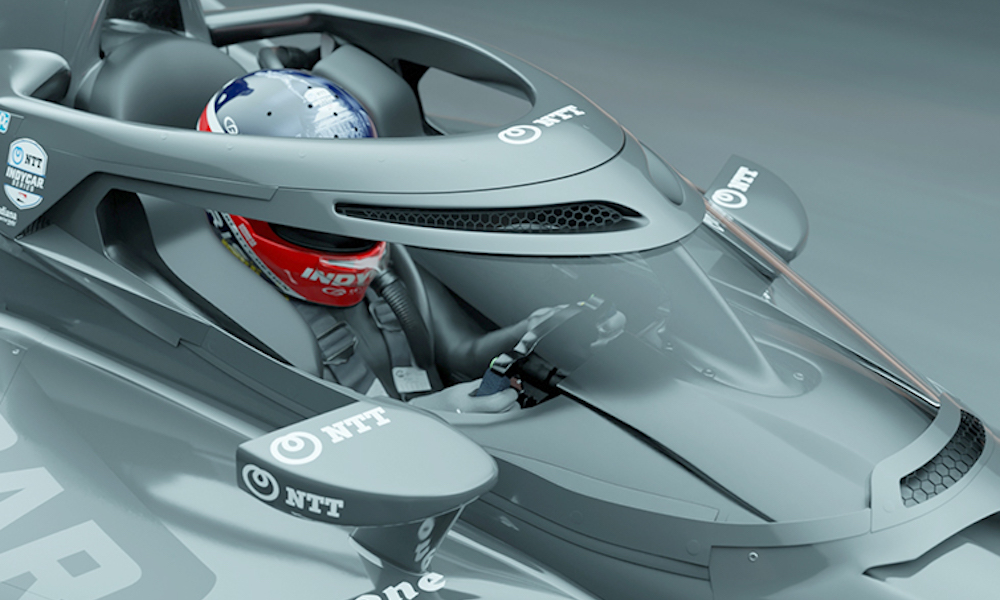An updated version of IndyCar’s Aeroscreen head protection device will make its debut at this weekend’s Grand Prix of Long Beach.
The Aeroscreen 2.0 will be mandatory for all cars competing in road and street course races, which make up over 60 per cent of the points-paying races on this year’s calendar.
IndyCar introduced the Aeroscreen in June 2020 as a way to protect drivers from head injuries. It consists of a PPG-developed laminated polycarbonate ballistic windscreen which is reinforced with a titanium framework from Pankl. The American championship collaborated with Red Bull Advanced Technologies on the Aeroscreen’s development.
‘One of the objectives of doing a 2.0 version was to save weight,’ explained Tino Belli, director of aerodynamic development for IndyCar. ‘Then we’ve taken that opportunity to also make the styling nicer, improve the driver ventilation, and make the thinner polycarbonate as strong as the thicker polycarbonate.’
The weight of the Aeroscreen has been reduced from 8.5kg to 6.6kg, representing a saving of almost 23 per cent. Additionally, the series mandated a 3D-printed titanium frame that has been used since the first race of the current season. The new frame, which IndyCar says has equal strength to its predecessor, adds 3kg to the overall weight loss, meaning that the total system has shed around 8kg since the first iteration. Belli has estimated that the weight saving contributes to a 15.6kg reduction in downforce.
Aeroscreen 2.0 is fitted with vents for driver cooling purposes, as well as a duct made of 3D-printed rubber that directs air onto the driver’s chest. The need for driver cooling aids arose from IndyCar race data which found that driver heart rates typically reached 150-200 beats per minute while body temperatures rose to over 37.7degC. A core body temperature of more than 38degC carries increased risk of negative side effects such as dehydration, dizziness and heatstroke. As Racecar Engineering reported in its February issue, there are different methods of driver cooling technology, including air-feeding ducts and a wearable collar that reduces core temperature after a stint.
‘We learned over the years where the limit of the vision was,’ said Belli. ‘With the first version, we were conservative. We gave them a wider field of vision. We found out that they didn’t need it. So, now we’ve used that space to create a…
Click Here to Read the Full Original Article at Racecar Engineering…

